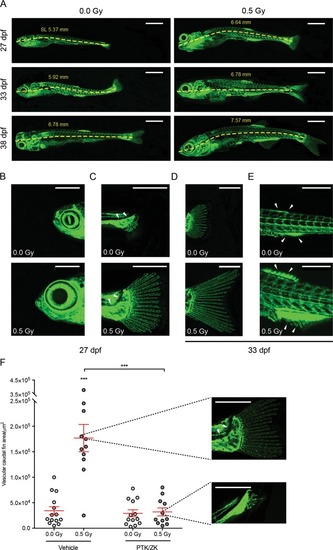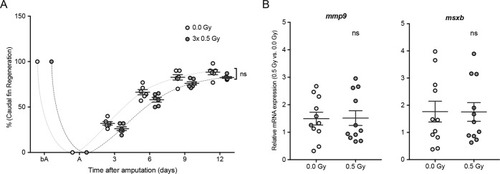- Title
-
Low doses of ionizing radiation enhance angiogenesis and consequently accelerate post-embryonic development but not regeneration in zebrafish
- Authors
- Marques, F.G., Carvalho, L., Sousa, J.S., Rino, J., Diegues, I., Poli, E., Pina, F., Saúde, L., Constantino Rosa Santos, S.
- Source
- Full text @ Sci. Rep.
|
LDIR upregulate the expression of several pro-angiogenic factors in |
|
LDIR accelerate zebrafish development in a VEGFR-dependent manner. |
|
Wound healing and blastema formation, triggering the regeneration process, are not affected by LDIR after amputation in zebrafish. The caudal fin of adult |



